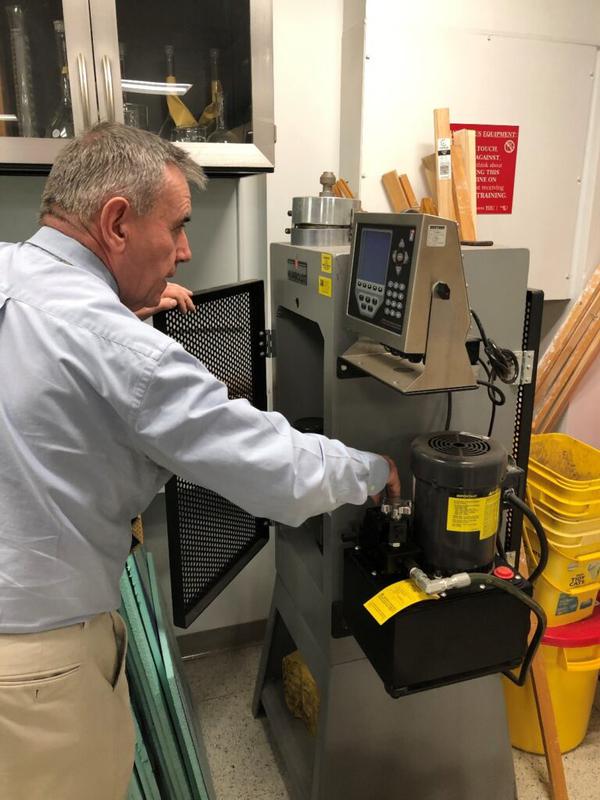Continuing education and skill development are critical components of professional development in any field, but in the ever-changing realm of engineering and construction, they are paramount to success. At Walden, each employee is guided through annual goal setting which includes an academic and skill development program, which is closely monitored by management. Walden employees recently had the opportunity to spend a Friday at Hofstra University in Hempstead, New York for a refresher to sharpen their knowledge of concrete design. Walden has a long-standing relationship with the University; Walden Principal Joseph M. Heaney III is currently the Co-Chair of the Dean’s Advisory Board Member for the Fred DeMatteis School of Engineering and Applied Science (SEAS) at Hofstra.

What did Walden learn?
Walden spent the first part of the day in the classroom with Professor David M. Rooney, Associate Dean of SEAS, revisiting multiple aspects of concrete design including:
- Concrete composition (cement, water, sand, gravel, crushed rock, admixtures)
- Water content and its effects on pourability and curing strength
- Curing time and what variables affect it
- Rebar placement and its effect on tensile strength
- Field slump testing and its role in decision making
- Batch calculations for a given water-to-cement ratio
The rest of the day was spent in the concrete laboratory, where Walden broke into two teams, each preparing a concrete mixture of a different water-to-cement ratio. Each team mixed cement, water, sand and gravel which was then poured into plastic cylinders, where they would be allowed to fully cure. Professor Rooney also demonstrated use of the hydraulic concrete cylinder strength-testing equipment located in Hofstra’s engineering laboratory.

What were the major takeaways from this class?
- As a construction manager and engineering consultant, managing the contractor and protecting your client’s interests is of utmost importance. Often times, the contractor may not fully understand the implications of altering the specified mixture ratios.
- The Slump Test is a simple, yet effective way of ensuring that the concrete mixture meets job standards. The allowable slump range is not a fixed number, but varies job-to-job based on application.
- Curing quality is directly affected by temperature and humidity. If you cannot control these items as with an indoor job, you must be fully versed in how these variables will affect your pour.
Walden plans to work with Hofstra to develop other opportunities for professional development and refresher courses, with interactive classes to cement the application of our engineering expertise. Walden tracks the courses taken and skill sets of each individual employee, from entry-level staff to the most seasoned Professional Engineers. Goals are established annually and training programs are linked to both individual and company development goals to ensure our staff grows professionally to better serve our clients.
Please give Walden a call to discuss how we can assist you with your next project!
